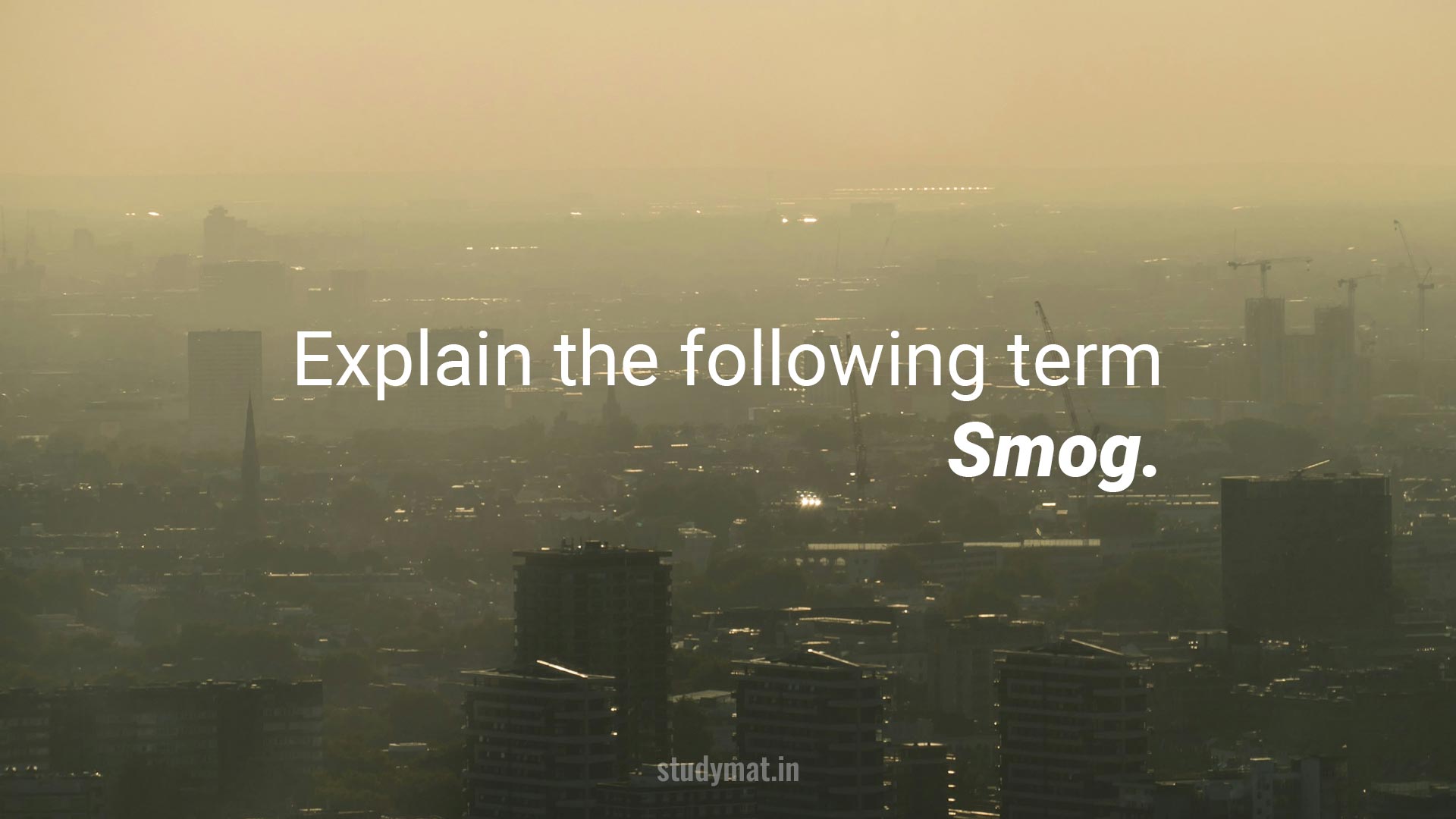In this article, we will Explain the following term Smog.
Definition of Smog.
Smog is a type of air pollution that occurs when smoke, dust, and other pollutants mix with fog or mist in the atmosphere. It’s often seen as a thick haze hanging over cities, especially during periods of stagnant air and high pollution levels. Smog is harmful to human health and the environment. It can irritate the eyes, nose, and throat, and exacerbate respiratory conditions like asthma and bronchitis. Long-term exposure to smog can lead to more serious health problems, including heart disease and lung cancer.
There are two main types of smog: Classic Smog and Photochemical Smog.
Read Also:
Explain the Relevance of Wetland with Respect to Nature Reserves at the Global Level.
Explain the Objectives of the Environment Protection Act of 1986 and Its Role in Environmental Conservation.
How does the Environment Influence Human Health? Explain it in detail with suitable examples.
Explain the Problems associated with Improper Waste Disposal and its Impact on Humans.
Acid Rain is considered one of the major global issues. Explain Acid Rain and Its Effects.
Explain the Different Parameters that can assess Water Quality as a Consumption.
Central Pollution Control Board (CPCB).
Classic Smog, also known as ‘London smog’ or ‘winter smog,’ occurs when coal or other fossil fuels are burned, releasing sulfur dioxide (SO2) and other pollutants into the air. These pollutants combine with water vapour to form sulfuric acid (H2SO4) and other harmful compounds, creating a thick, greyish haze.
Photochemical Smog, on the other hand, is formed when sunlight interacts with pollutants like nitrogen oxides (NOx) and volatile organic compounds emitted by vehicles, factories, and other sources. These pollutants react with sunlight to produce ozone (O3) and other secondary pollutants, which can cause respiratory problems and damage crops and other vegetation. Photochemical smog is often associated with warm, sunny days and is more common in urban areas with heavy traffic and industrial activity.
FAQ:
- How is smog formed?
- Is smog harmful?
- What is smog and its types?
- What is smog made of?
- What is smog chemistry?
Follow us
If you like this article, you can Follow us on Facebook.
Also, you can Join our Official Facebook Group for QnA Sessions and Discussions with the worldwide IGNOU community


